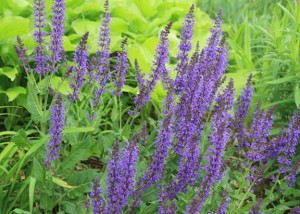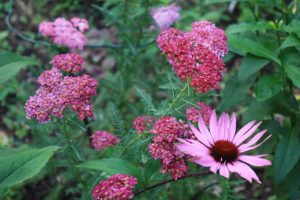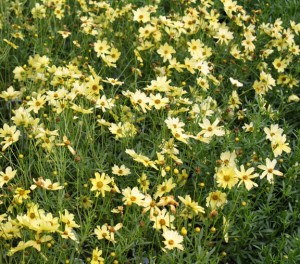designed for the way women work.

“Getting Your Perennial Garden to Keep On Blooming” by Ruth Rogers Clausen
Category: Presenting "The Curious Gardener"
 By August, does it feel like the best is over in your garden? Spring and summer bloom is usually abundant, but by late summer the garden may look tired. With just a little extra care you can make your display last until early Fall by growing perennials that keep blooming throughout the season, or produce a second flush later in the season.
By August, does it feel like the best is over in your garden? Spring and summer bloom is usually abundant, but by late summer the garden may look tired. With just a little extra care you can make your display last until early Fall by growing perennials that keep blooming throughout the season, or produce a second flush later in the season.

“Off with their heads” should be your mantra. The act of deadheading stimulates lower buds to develop and produce more flowers. Perennials such as Scabiosa ‘Butterfly Blue’, purple toadflax (Linaria purpurea) and coreopsis bloom more or less continuously throughout the season. Threadleaf coreopsis (C. verticillata ‘Moonbeam’ and others) are trickier to deadhead because they have lots of skinny stems that take a little more time to snip. I recommend a lightweight compact scissor from Womanswork, which is small enough to be precise.
With strong-stemmed spiky bloomers you can whack off the stems more readily and be rewarded by blooms on the lateral branches later. These include meadow and summer phlox, obedient plant, salvias, campanulas, monkshood, and yarrow. If you work around globe thistle (Echinops) or other spiny plants, protect your hands with Womanswork garden gloves. I like the original work glove or rose leather gauntlet glove for this job.
Some perennials can be cut to the ground after blooming, and new foliage and possibly some flowers will return in a few weeks. These include Lady’s Mantle, catmints and some hardy geraniums (G. endressei ‘Wargrave Pink’ for instance). Shasta daisies can be cut to the ground after their second flush, with the possibility of more blooms later.
To deadhead, cut the stem above a leaf bud further down the stem, where you may see new growth. After a severe cutting, give the plants a deep watering and feeding with liquid seaweed or other fertilizer. Also fluff up the surrounding soil so that late rains penetrate the soil easily.




